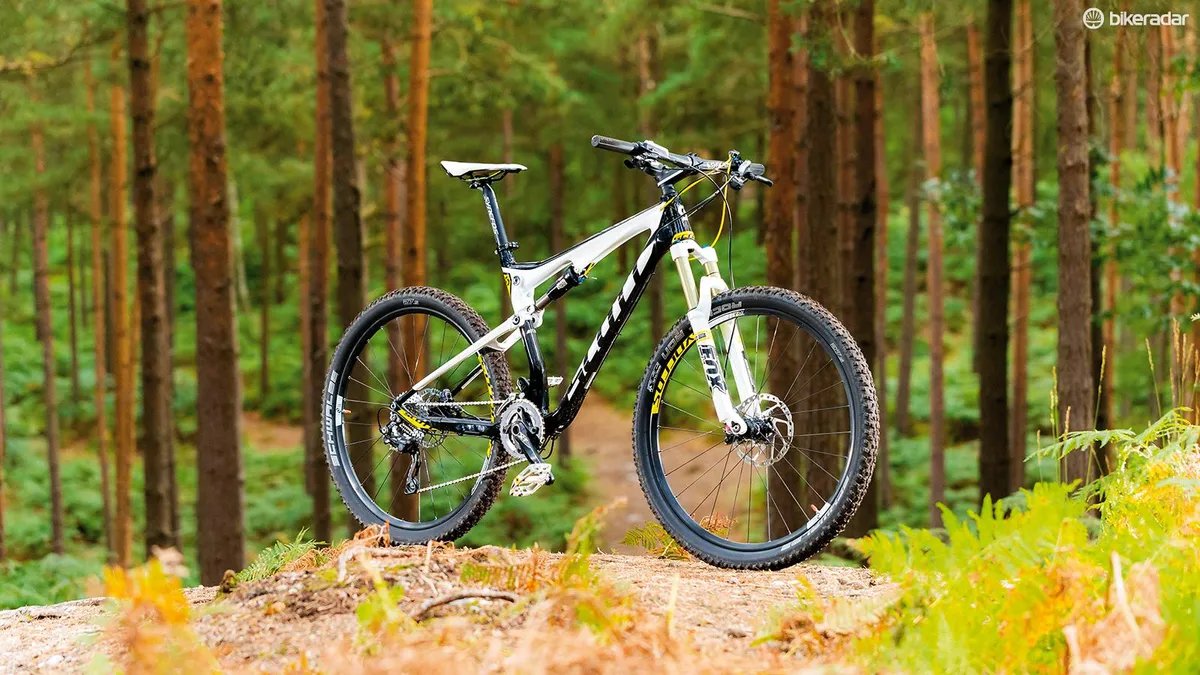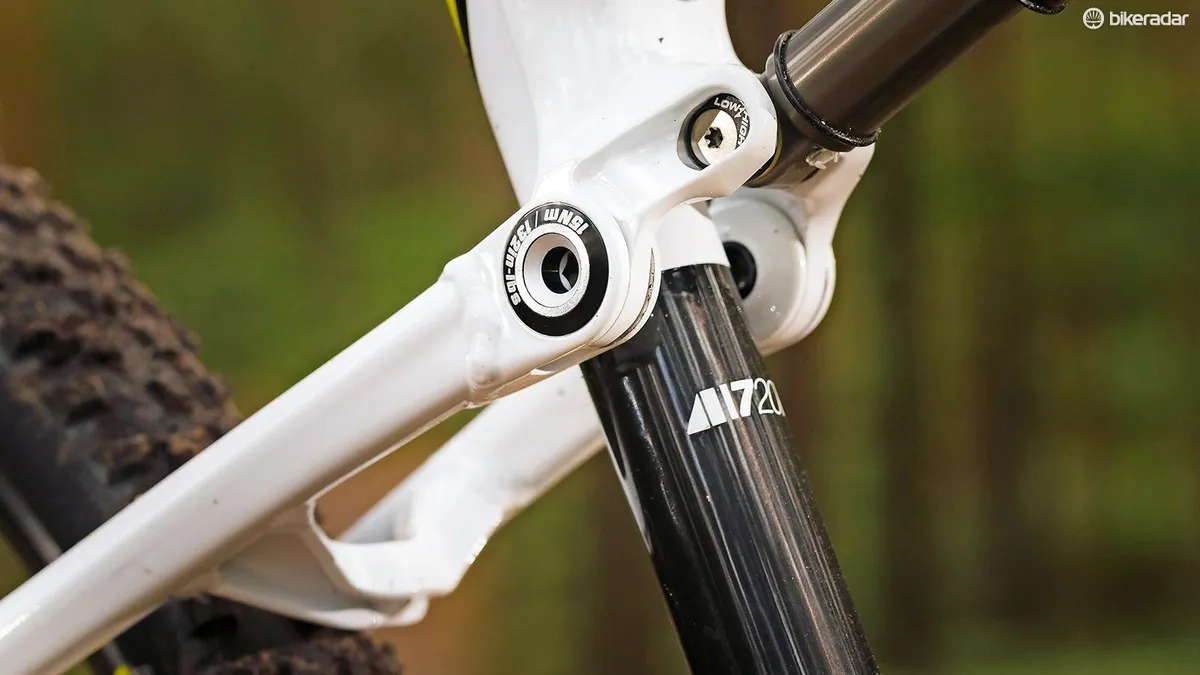Scott’s many bikes may be obscured by the slew of confusingly boring number codes, but the 120mm Spark 720 has its own clear and winning personality.
The Idaho company started in 1958 with ski poles, sold its first mountain bike in 1986, and is firmly in the ‘traditional brand’ camp.
- Highs: A well-sorted, capable and cohesive ride
- Lows: Deserves a shorter stem, wider bars and decent rubber
- Buy if: You love fast, fun trails in any direction
Frame and equipment: carbon up front and an XT and SLX spec
The Spark 720 has a carbon front triangle pinned solidly to an aluminium rear with reassuringly large pivots; quality Shimano brakes and drivetrain; travel-adjusting rear suspension, and an all-up weight (without pedals) of 11.8kg.
While the Fox Float 32 fork runs the crude Evolution damper, it’s less of an issue on the kind of fast, swooping trails this bike loves than it is in longer-travel formats hitting bigger terrain. The spring is a good match for the Nude rear shock – built by Fox to Scott’s specifications – and in full 120mm travel, the bike’s well-balanced and neutral even hitting berms and jumps at speed.
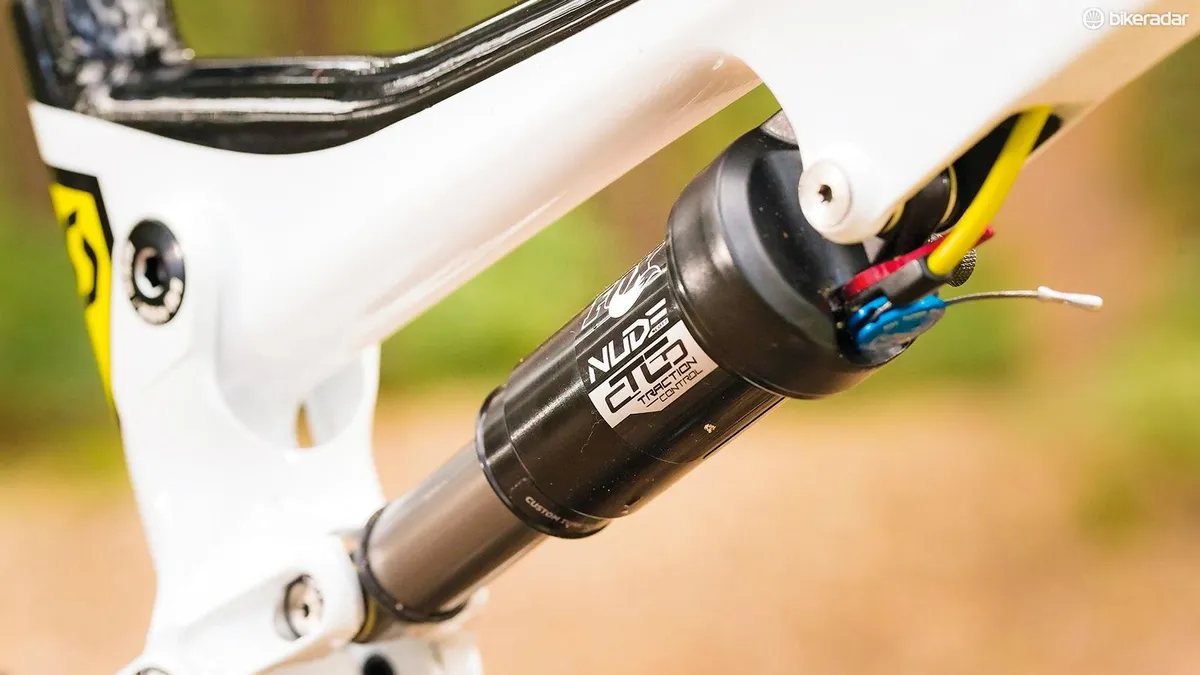
The Fox Nude shock matches the Float 32 fork well
A tidy Twinloc lever on the bar clicks through a taut 85mm setting to a full lockout, accompanied by simultaneous switches to the fork’s CTD dial, while (mostly) internal cable routing keeps the Spark’s smooth lines admirably clean.
The Shimano XT crank and rear derailleur will work for ages with the SLX shifters, front mech and brakes, and the SLX ‘downgrade’ is slight – the brakes in particular, despite a 160mm disc under the rear post mounts, are excellent. Most of the rest is Syncros – seatpost, 90mm stem, 700mm bars and so on – and it’s all good, appropriate stuff, but there’s plenty of scope for weight loss.
DT Swiss spokes bind the (Syncros-branded) hubs to Syncros’ own 32-hole 650b rims tightly enough for good cornering accuracy, and you even get a QR seat clamp. Despite its marathon/cross-country intentions, the Spark is lively and pert on fun trails.
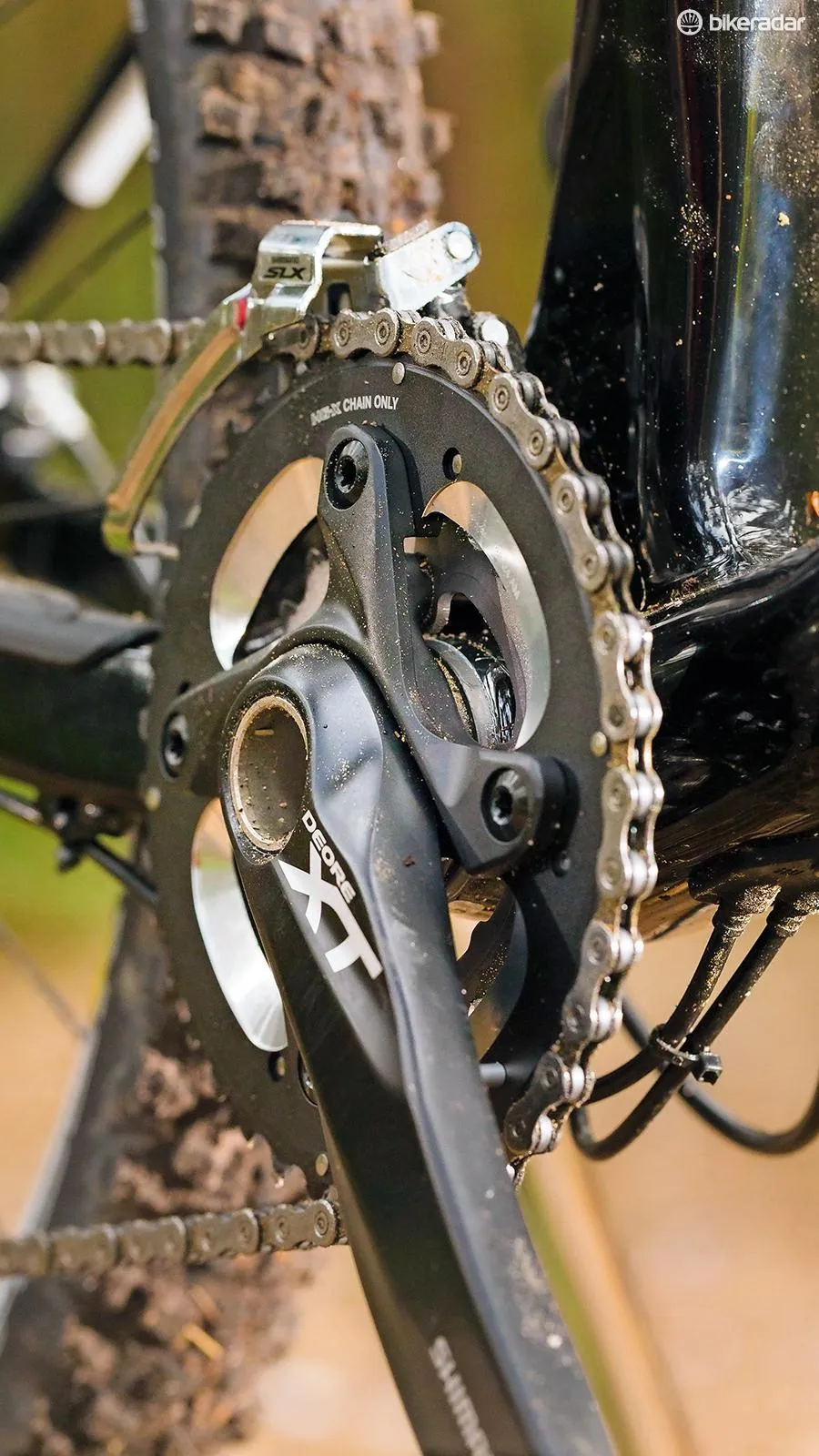
You get Shimano XT cranks and rear derailleur, and only a slight downgrade to SLX for the shifters
Even with that rather long, narrow cockpit and in its steeper setting – a chip in the shock mount drops the bottom bracket 7mm and the head angle 0.5 degrees to 68.3 – it’s a stable and confidence-inspiring ride.
The 625mm effective toptube on this Large gives plenty of room for 6ft riders, and could easily accommodate a slightly shorter stem and wider bars. It’s just a shame there’s no routing for Stealth dropper posts.
Ride and handling: "a cross-country design for the modern age"
For a pretty ‘Euro’-looking, self-professed marathon/XC bike, the Spark is impressively versatile. It feels surprisingly at home on techy trails, where its stiff frame and fast but assured steering create little reason to slow down.
The most obvious limiting factors are the sketchy tyres and the cockpit – the wider bar and shorter stem we tried (750mm/60mm) markedly improved steering responses, weight distribution and confidence for descents without really impacting climbing.
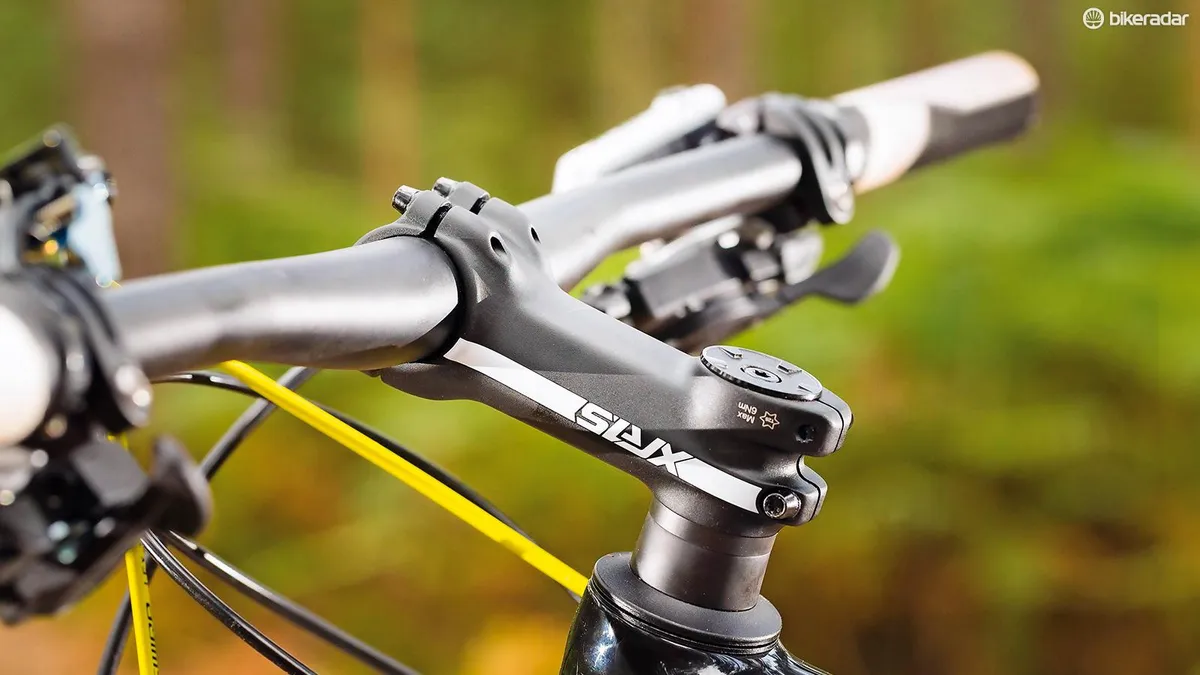
The stock cockpit was a bit on the long and narrow side, so we swapped in a wider bar and shorter stem
Put the Twinloc lever in Descend and the bike sucks up rough straights like there's more travel than there is. Get into some fast dips or berms where you want a platform to push against, however, and that eager rear shock just feels a bit saggy instead.
It can also wallow around the middle of its stroke under climbing, bobbing slightly even in the shorter, 85mm Trail setting. But while it's neither quite as efficient nor as controlled as it could be, it strikes a balance that works well in most situations. In general, the Spark 720 feels light and fun to ride.
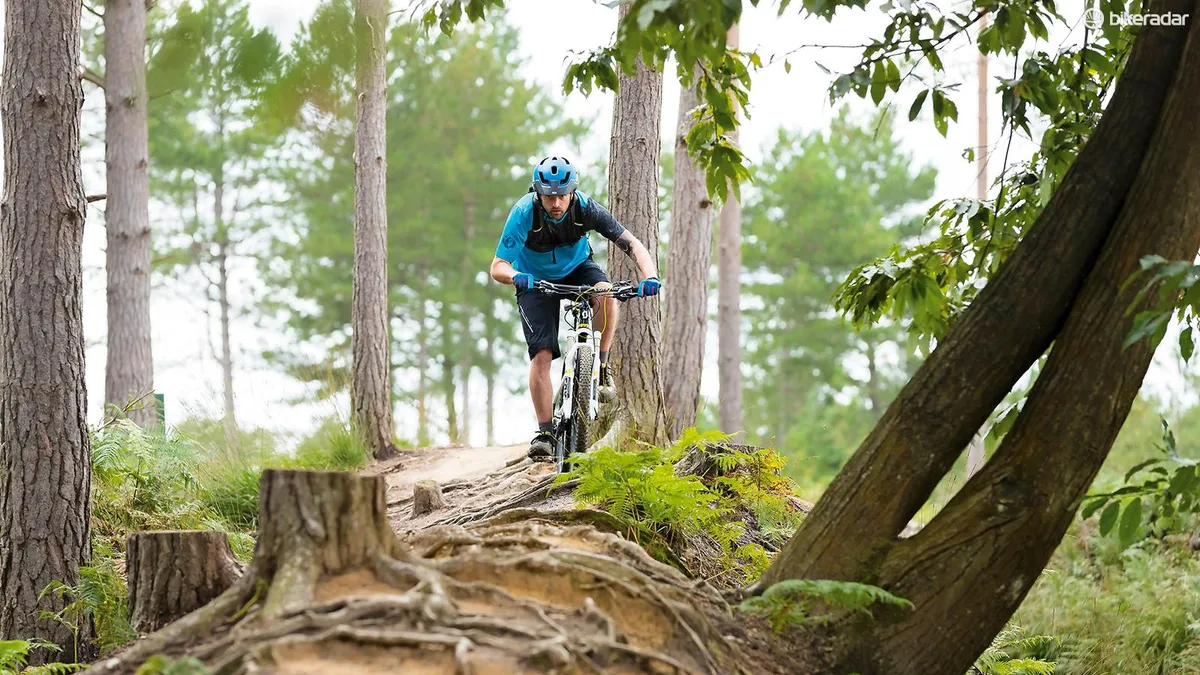
The Spark 720 felt at home on techy trails
The 650b wheels suit this bike – they're stiffer and quicker-turning than 29in hoops of a similar weight, and the Spark frame is well capable of the sort of fast trail riding they inspire.
Vitally, the balance of stiffness and weight is consistent throughout, so no part of the Spark feels under or over-gunned. It all works together, and it works well. This is cross-country design for the modern age
